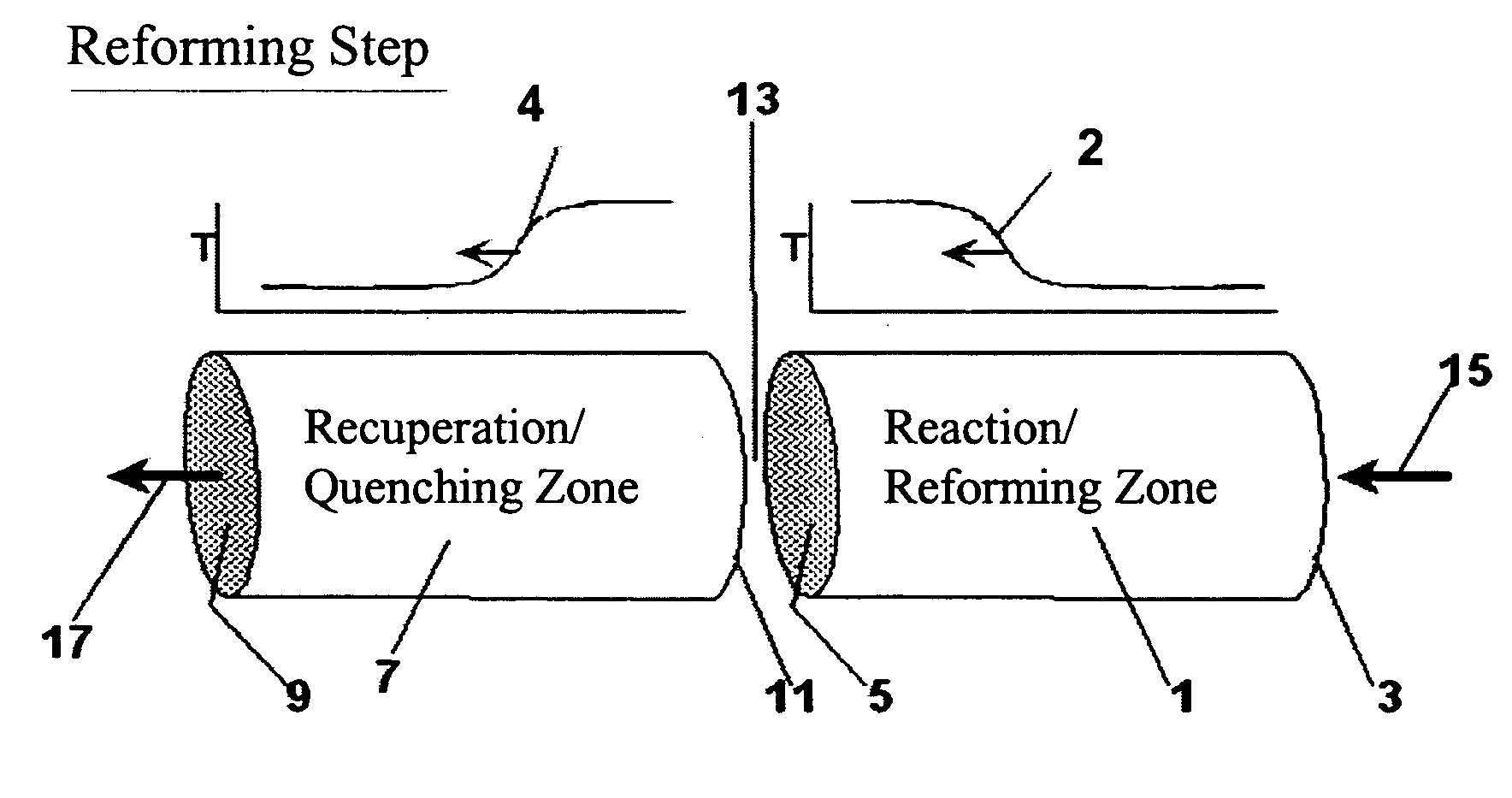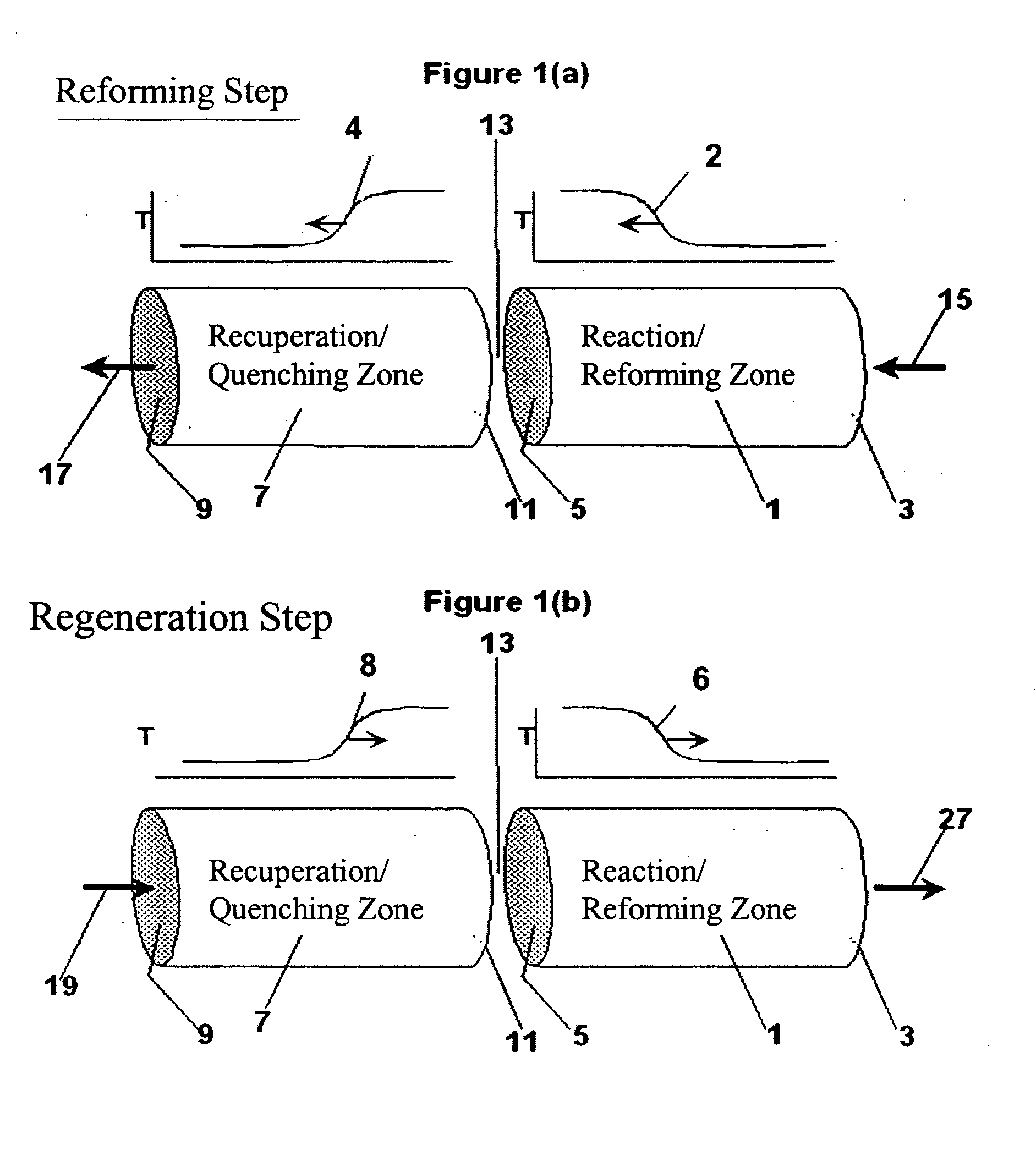Methane conversion to higher hydrocarbons
a technology of methane and acetylene, which is applied in the direction of hydrocarbon by hydrocarbon cracking, liquid gas reaction process, energy input, etc., can solve the problems of high cost, high cost, and inability to scale well, and achieve efficient conversion of methane , the effect of avoiding equipment heat degradation
- Summary
- Abstract
- Description
- Claims
- Application Information
AI Technical Summary
Benefits of technology
Problems solved by technology
Method used
Image
Examples
example 1
[0110] The following example is merely illustrative of one exemplary embodiment and process, and is not intended to limit the scope of the invention. Methane is converted to acetylene in a pair of reactor systems, each arranged according to simplified illustration FIG. 5, suitably valved, such that one reactor system is executing the regeneration step while the other reactor system is executing the pyrolysis step. Some embodiments may also include more reactor systems than just a pair, such as multiple reactor systems, each operating in a phased timing arrangement, such that the entire process is substantially continuous. The reactor system includes at least a first reactor / recuperator (102), a mixer or mixing zone (109), and a second reactor / reforming zone (101).
[0111] Both reforming (101) and recuperation (102) reactor zones comprise extruded, ceramic honeycomb monolith blocks, stacked in 3 dimensions to fill the reactor zone volume. The overall reactor systems are about 10 ft in...
PUM
| Property | Measurement | Unit |
|---|---|---|
| temperatures | aaaaa | aaaaa |
| temperatures | aaaaa | aaaaa |
| temperature | aaaaa | aaaaa |
Abstract
Description
Claims
Application Information
 Login to View More
Login to View More - R&D
- Intellectual Property
- Life Sciences
- Materials
- Tech Scout
- Unparalleled Data Quality
- Higher Quality Content
- 60% Fewer Hallucinations
Browse by: Latest US Patents, China's latest patents, Technical Efficacy Thesaurus, Application Domain, Technology Topic, Popular Technical Reports.
© 2025 PatSnap. All rights reserved.Legal|Privacy policy|Modern Slavery Act Transparency Statement|Sitemap|About US| Contact US: help@patsnap.com



